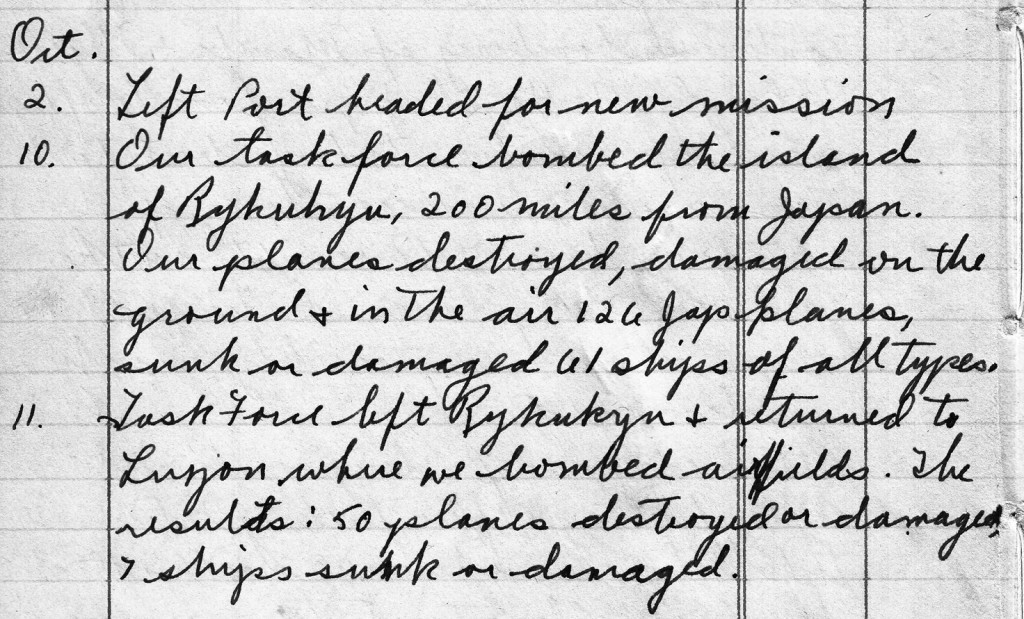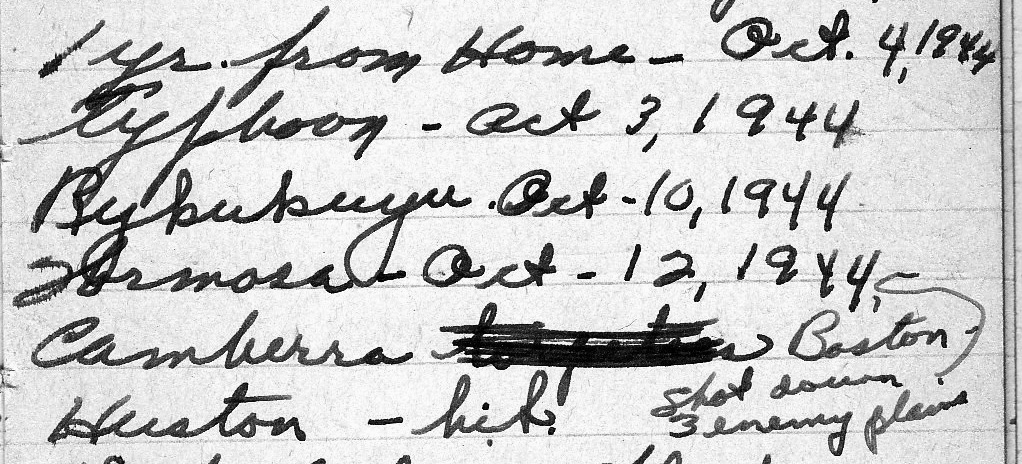Here’s a Really Big Overview of the situation in the Pacific in mid October, 1944. By the 10th or so, Japan began to scramble her defenses in anticipation of an American invasion – by their reckoning, Formosa or the Philippines were the most likely targets. In fact, the Americans had put into play (months earlier) the next invasion site – The Gulf of Leyte in the Philippines, and had established Oct. 20 as Invasion Day. By the time Task Force 38 had finished attacking Okinawa and Formosa by October 13, Japan had suffered crushing losses of fighter planes (more than 500 shot down). Meanwhile, the American Invasion Armada of more than 450 ships carrying troops, supplies and equipment steamed steadily westward and northward toward Leyte.
The four task groups of TF38 ranged north and east of Luzon during those days, hammering away at targets up and down Japanese territories to soften their ability to break up the invasion at Leyte. As we have already seen, Task Group 38.1 kicked up swarms of attackers off Formosa on the 12th and 13th, and the cruiser Canberra was torpedoed and rendered inoperable (requiring a tow). Twenty four hours later, Canberra’s replacement, the light cruiser Houston, was also hit and needed a tow.
The Boston took her in tow and Task Unit 30.3, called CripDiv1 (Cripple Division) began the arduous 1200 mile journey through enemy waters at the whopping top speeds of 4 to 5 knots per hour. Over the next several days, CripDiv1 came under blistering attacks by enemy planes. Part of the Japanese Fleet was dispatched to sink the cripples (what they erroneously believed to be the last remnants of the American fleet.
The Boston was relieved of tow-duty on the 16th when fleet tugboats arrived. At 10 am, Boston, finally freed from the tow, took up position to screen the cripples. Four hours later, a swarm of 70 planes attacked. Two small carriers were less than 20 miles away, and their fighter planes knocked down most of the enemy planes, but five dive-bombers got through. While the Boston and the destroyers fought them off, the Houston was torpedoed AGAIN. The destroyers, who were still transferring the survivors from the first torpedoing of the Houston, now had to rescue the rest of the crew that once again had to abandon ship.
This rag-tag collection of vessels now earned the name BaitDiv1 (the Streamlined Bait) by Admiral Halsey, as he hoped the Japanese Fleet would come after the cripples, allowing him the opportunity to have a once-and-for-all kick-ass naval battle – mano a mano – with the Imperial Japanese Navy. (Before they reached the cripples, the Japanese figured out that Task Force 38 was still intact, and they retreated.)
Up next: The Battle for Leyte Gulf, also known as the Second Battle of the Philippine Sea.


